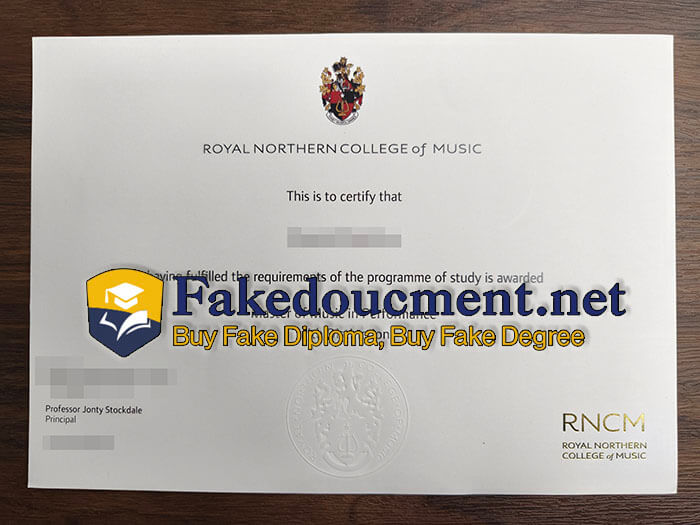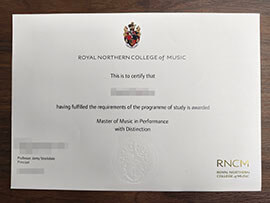
Where to order fake Royal Northern College of Music degree certificate online? Why people would like to buy a realistic Royal Northern College of Music diploma certificate online? Can l purchase a high-quality Royal Northern College of Music degree certificate online? The Royal Northern College of Music (RNCM) is a leading conservatoire located in Manchester, England. It offers undergraduate and postgraduate courses in music performance, composition, conducting, and music education.
The college has a strong reputation for producing talented musicians and has a number of renowned alumni who have gone on to have successful careers in the music industry. The RNCM also hosts a wide range of concerts and events throughout the year, showcasing the talents of its students and faculty members.
The RNCM has a history dating back to the 19th century and the establishment of the Royal Manchester College of Music (RMCM). In 1858, Sir Charles Hallé founded the Hallé orchestra in Manchester, and by the early 1890s had raised the idea of a music college in the city. Following an appeal for support, a building on Ducie Street was secured, Hallé was appointed Principal and Queen Victoria conferred the Royal title.
The RMCM opened its doors to 80 students in 1893, rising to 117 by the end of the first year. Less than four decades later, in 1920, the Northern School of Music was established (initially as a branch of the Matthay School of Music), and for many years the two institutions peacefully coexisted.
It wasn’t until 1955 that NSM Principal, Hilda Collins in recognising the importance of performance in training students, met with RMCM Principal, Frederic Cox, to raise the question of merging. Discussions continued until September 1967 when a Joint Committee was formed to oversee plans to combine the two colleges. The RNCM was formed in 1972, moving to its purpose-built home on Oxford Road in 1973.
The college building was built on the corner of Oxford Road and Booth Street West between 1968 and 1973 by architects Bickerdike, Allen, and Rich. The two-storey rectangular concrete structure is fronted by tall glazed bays recessed behind an array of square concrete pillars.
Originally an elevated walkway ran along the Oxford Road side connecting the building to the former neighbouring Precinct Centre via a bridge over Booth Street East.
Truncated sections of this walkway were the vestigial evidence an unrealised plan to create a network of high-level “boulevards”, providing pedestrian routes on concrete stilts above street level from the RNCM to neighbouring buildings, and extending as far as Hulme and Ancoats. Only the bridges over Oxford Road and Booth Street East were ever constructed.






